PA Master Naturalist’s Notebook: October 1, 2024
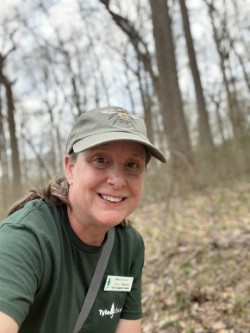
As the Program and Tour Coordinator at Tyler Arboretum, every week I look forward to preparing my weekly report for our volunteer educators.
I draw upon my training as a PA Master Naturalist to highlight the plants, insects, animals and other natural phenomena I’ve recently observed on Tyler’s grounds. I include photos (and some videos) along with educational tidbits our volunteers can share with our visitors.
My colleagues have encouraged me to compile my reports into an occasional blog for you. I’d love to hear from you about your observations too! Please email me anytime at tmallon@tylerarboretum.org.
Report: October 1, 2024
The start of fall has brought cooler nights and some much-needed rain. Asters and goldenrod are now taking center stage, migrating birds are passing through, and chipmunks and squirrels are busy gathering food for the winter. The summer flowers may be fading, but there’s still plenty of color to be seen around the Arboretum!

Eastern American jack-o’lantern (Omphalotus illudens)
In early September, a large display of jack-o’lantern mushrooms appeared in the Native Woodland Walk. The cluster pictured here was nearly the size of a basketball! These toxic mushrooms grow on the stumps and roots of hardwood trees during the fall. Fascinatingly, they are bioluminescent, and one theory suggests that their glowing light attracts insects, which then help spread the mushrooms’ spores. I missed my chance to walk out after dark to witness this phenomenon—perhaps next time!
Location: Native Woodland Walk.
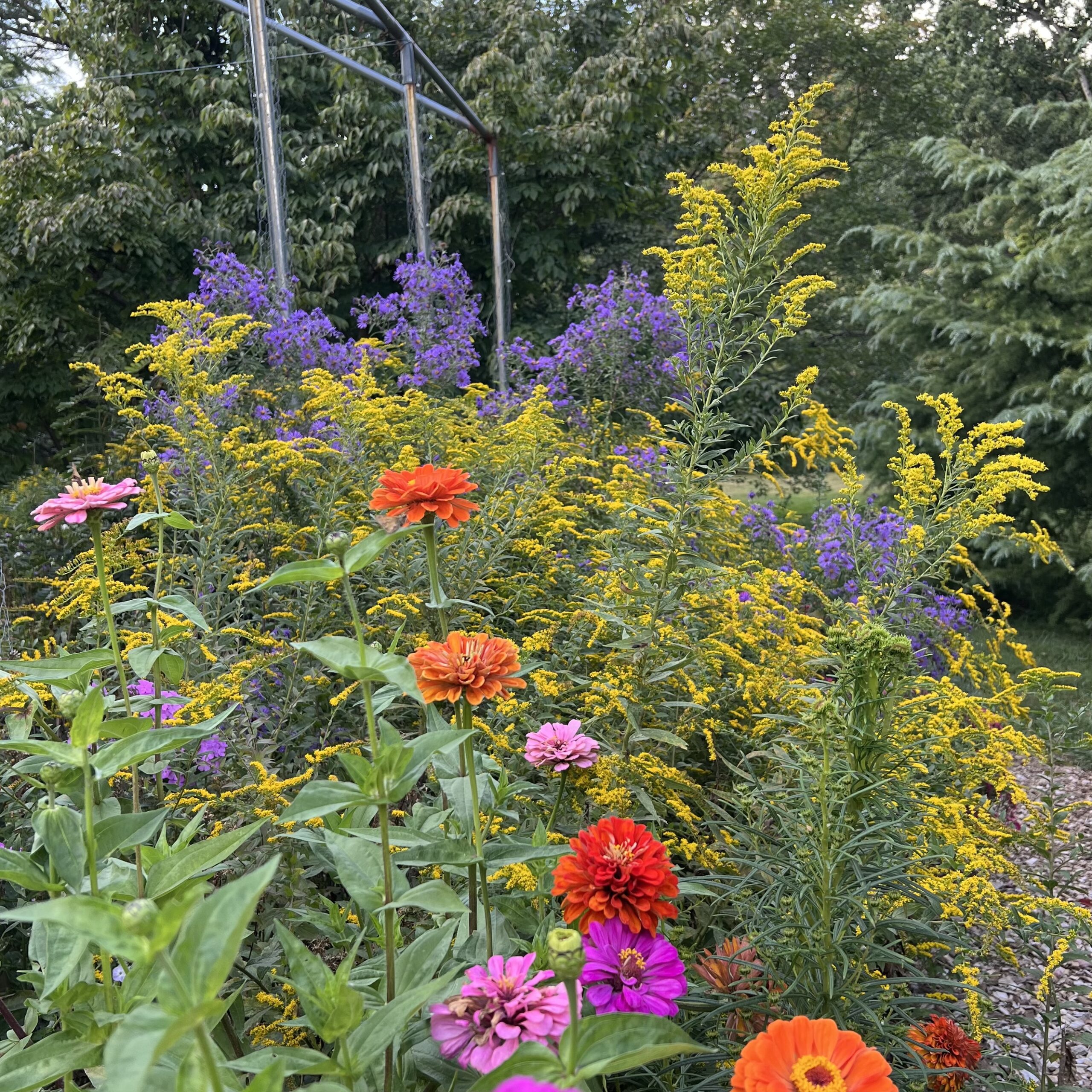
A display of zinnias, aster and goldenrod
Location: Pollinator Preserve.
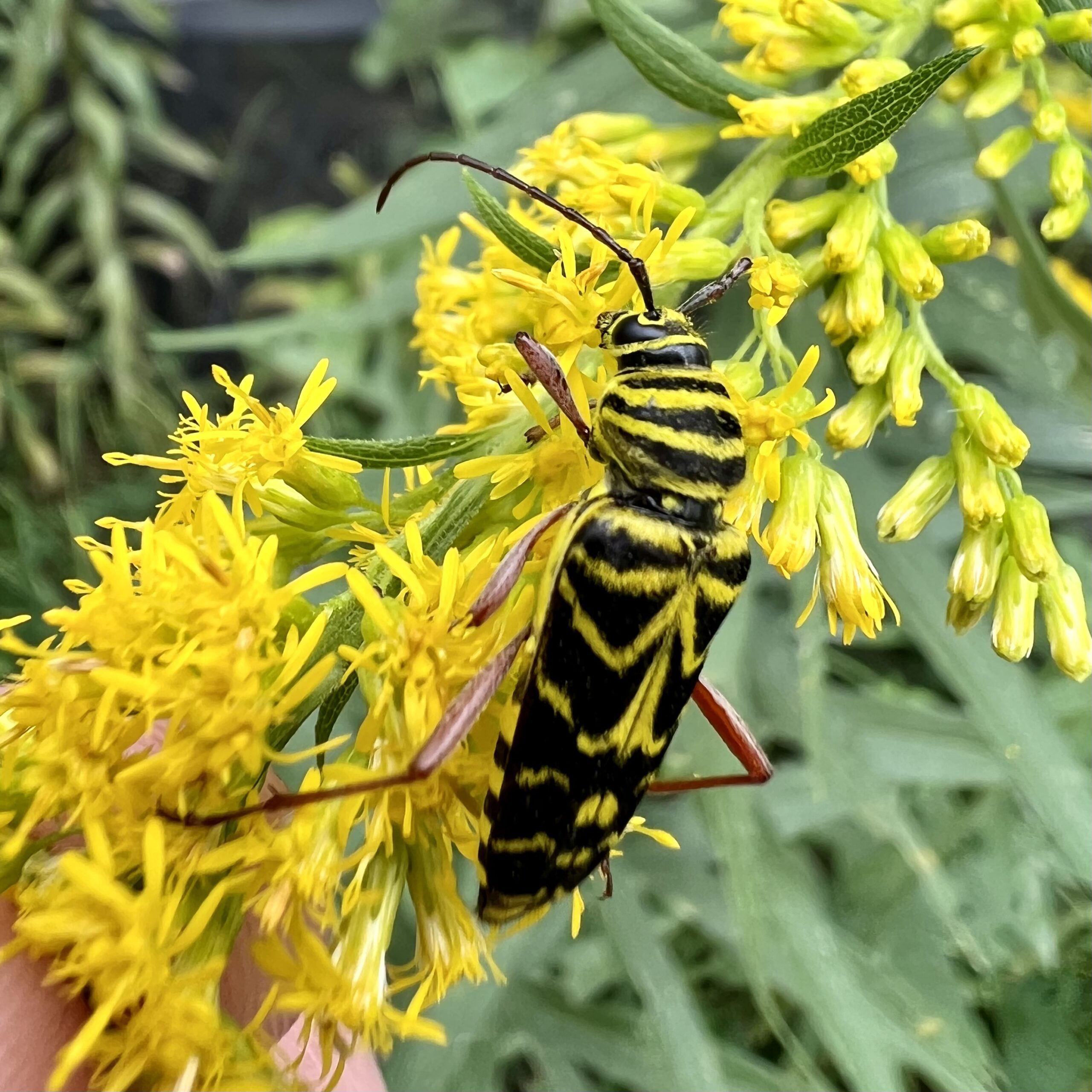
Locust borer beetle (Megacyllene robiniae)
In fall, locust borer beetles lay eggs in crevices they carve in the bark of Black Locust trees. The eggs hatch in spring, and larvae tunnel through the tree, feeding all summer. Adult beetles emerge in September, feeding on goldenrod pollen and nectar, and the cycle starts again.
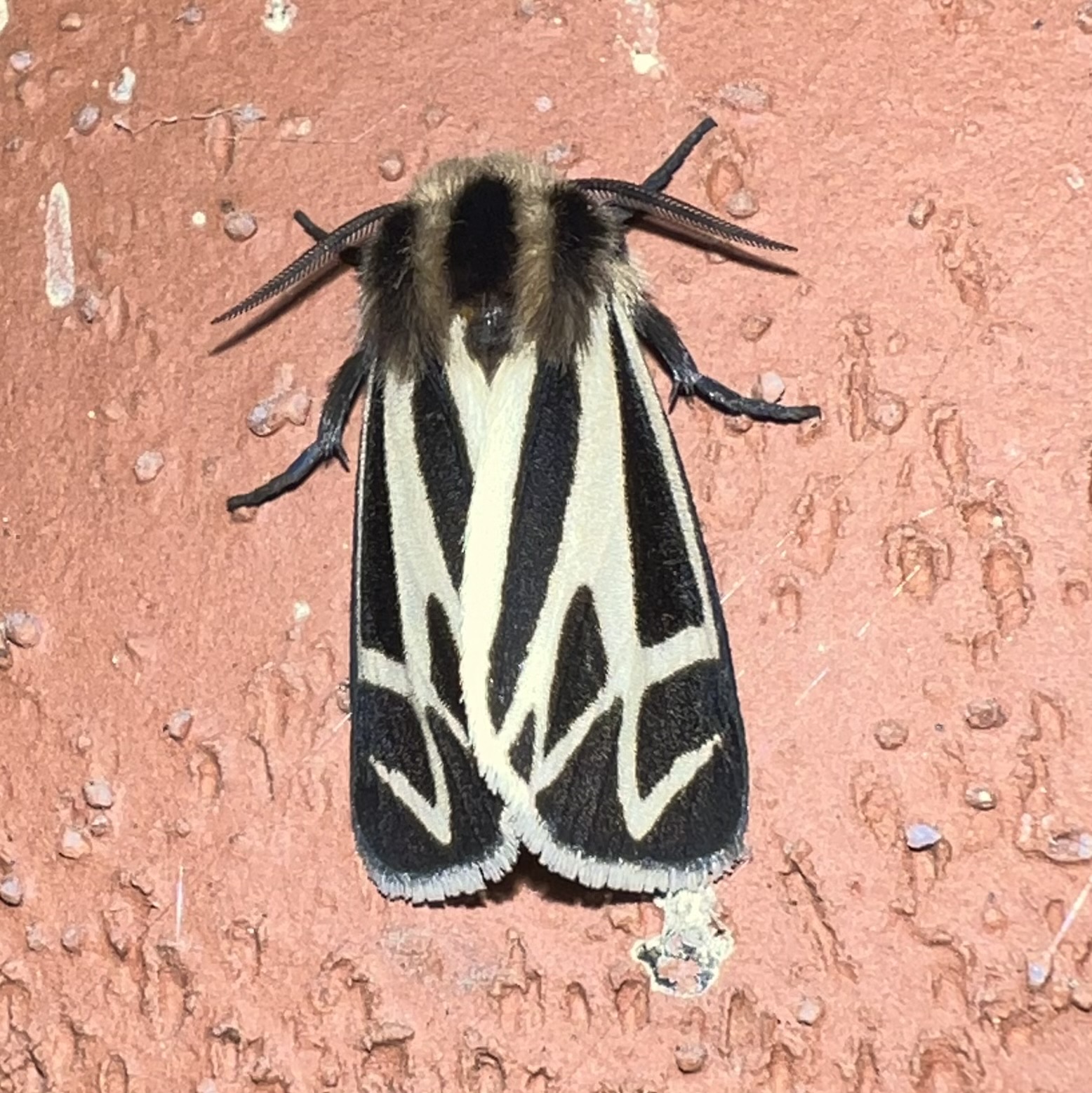
Best guess: Harnessed tiger moth (Apantesis phalerata)
Tiger moths’ distinct coloration serves as a warning to predators that they are distasteful. They also produce high-frequency clicks as a defense mechanism. Despite these protective measures, these moths are often eaten by bats. As adults, tiger moths have a short lifespan—typically living only 5 to 10 days after mating.
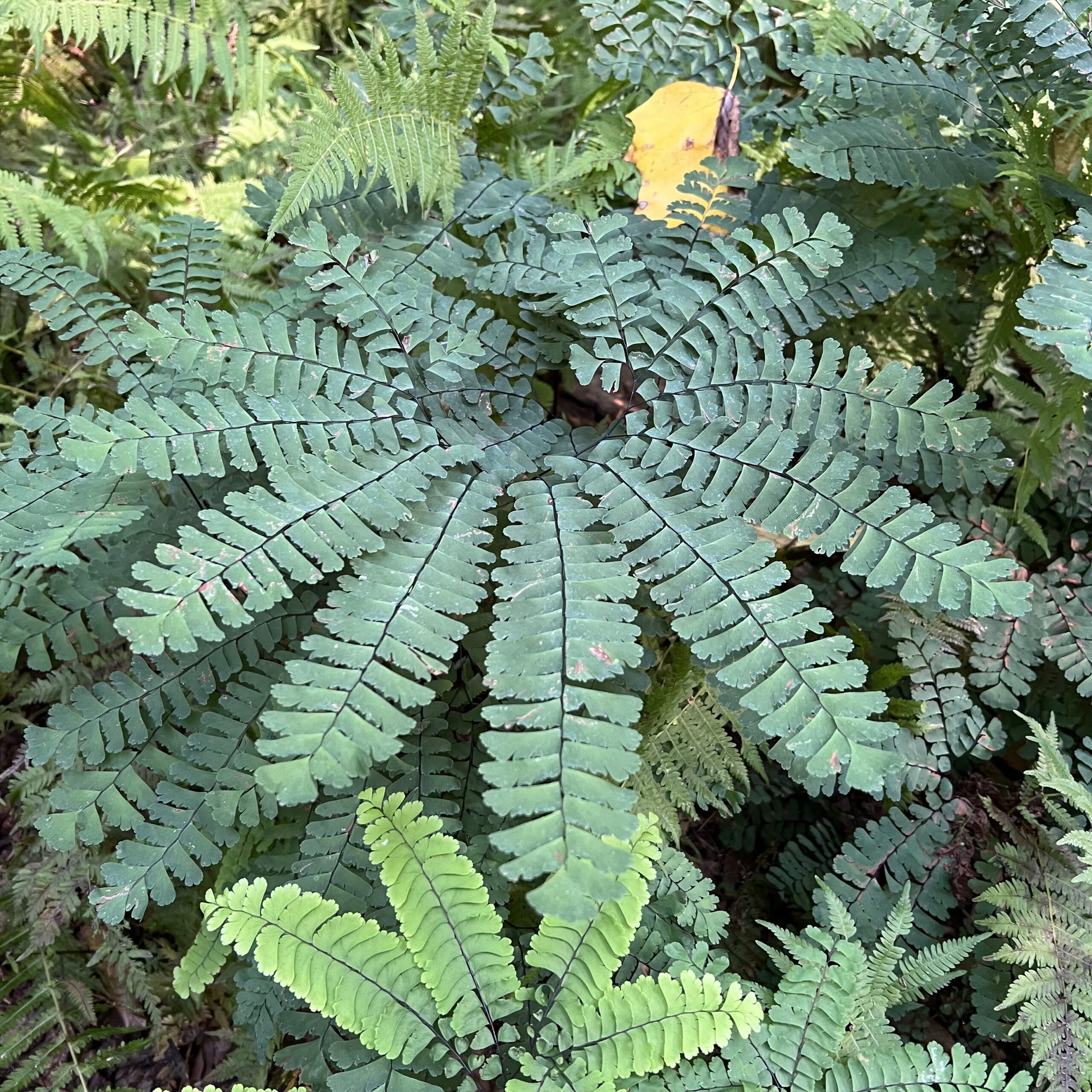
Maidenhair fern (Adiantum pedatum)
I’ve only found two patches of maidenhair fern on Tyler’s trails outside the deer enclosure fence. This patch can be found on the White Trail just outside Gate 2. To reach it, go out Gate 2 and take a right at the T to stay on the White Trail. You’ll find the ferns on your right, about midway between the T and the intersection of the Yellow Trail.
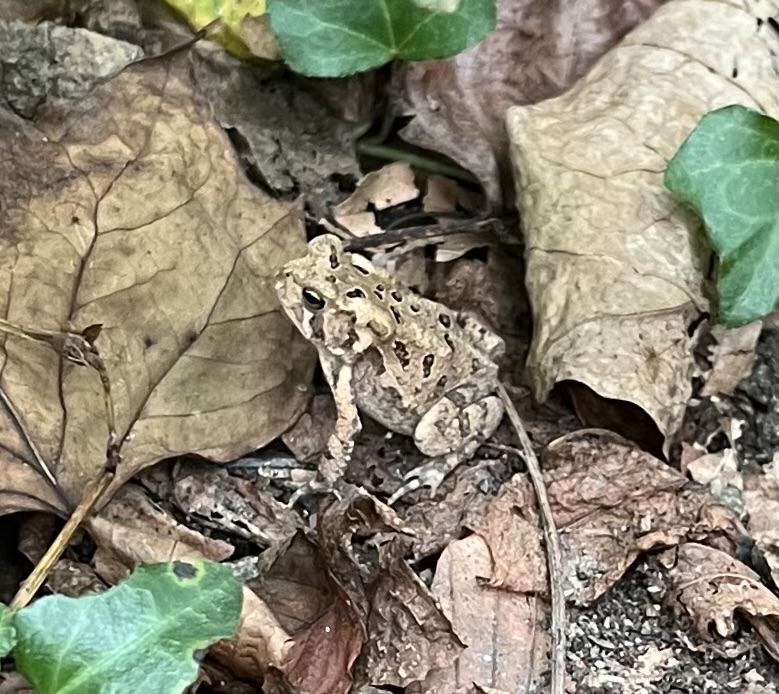
American Toad (Anaxyrus americanus)
Watch your step on the trails — toads and frogs are on the move! Toads can be identified by their bumpy skin, while frogs are usually smooth. This toad was easily camouflaged by the leaf litter in the North Woods.
Remember: Please don’t handle our amphibian friends. Touching them can harm their delicate skin, which is permeable and sensitive to chemicals and oils from human hands. Additionally, the stress from being handled can negatively impact their health and disrupt their natural behaviors.
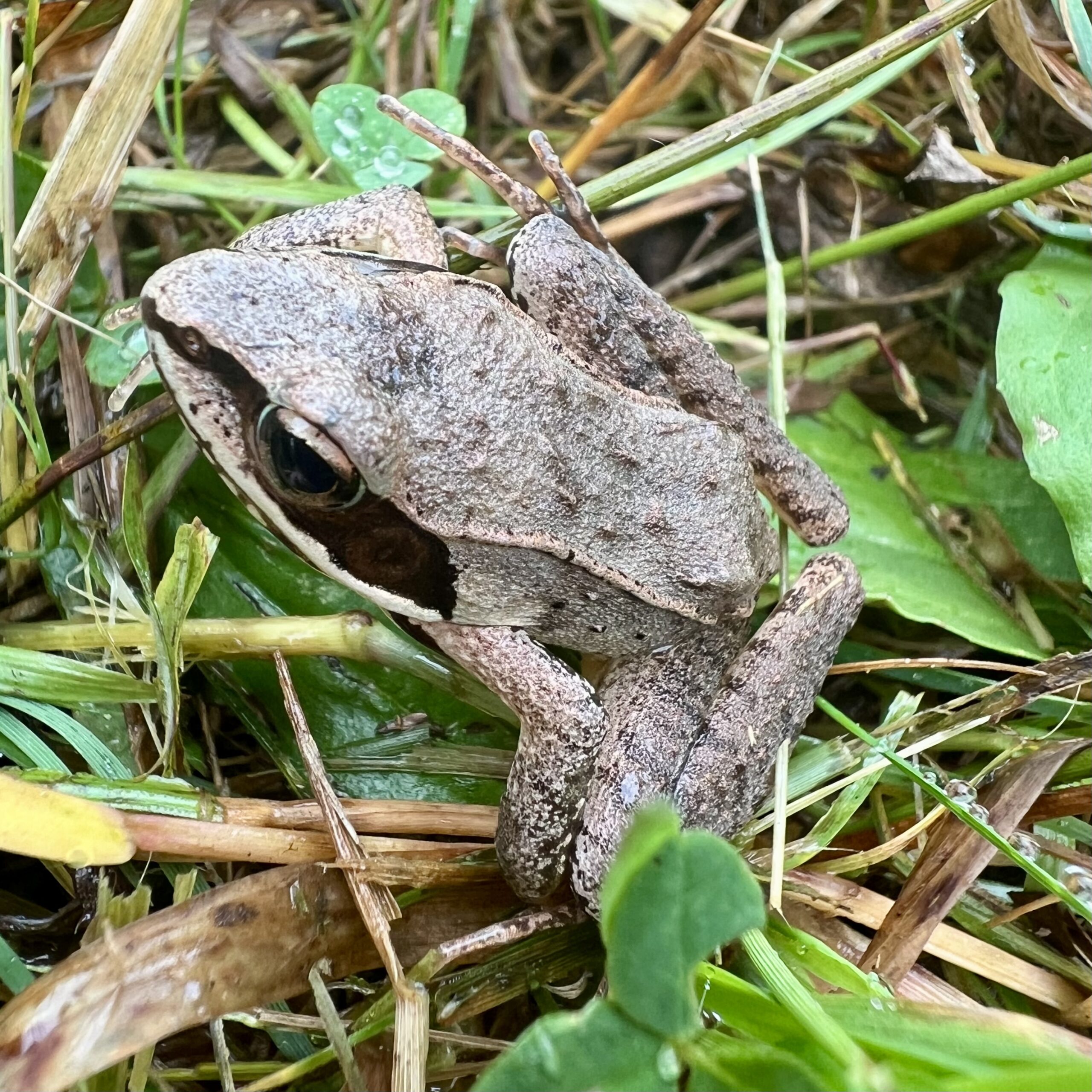
Wood Frog (Lithobates sylvaticus)
I don’t see wood frogs very often, but this one hopped across the Blue Trail and paused long enough for a photo. This tiny frog produces the loud quacking calls we hear in vernal pools in early spring. In winter, wood frogs burrow into leaf litter on the forest floor — and freeze solid! Their bodies produce large amounts of glucose that prevents ice from forming inside their cells, while ice forms between the cells. During this time, their hearts stop and they cease breathing. When temperatures rise, they thaw, return to life, and migrate to vernal pools to mate.






